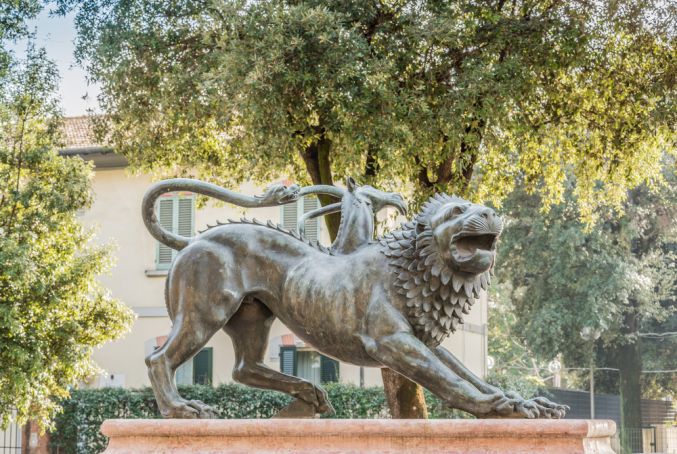Although overshadowed by its more famous Tuscan neighbours, Arezzo has a charm all of its own.
Arezzo, located at the confluence of the Casentino, Valdarno and Val di Chiana valleys in central Tuscany, is not in the same picture-postcard league as nearby Florence or Siena but its quirky, unexpected quality makes a visit here well worthwhile.Home to some 100,000 inhabitants, the provincial capital tends to get left off the mainstream tourist trail, giving it an exclusive feel and making it a pleasant place to explore.
The first human settlement around this ancient town can be traced back to Stone Age times. An important Etruscan city-state and later an equally important Roman city, by the Middle Ages Arezzo was a thriving economic, religious and cultural hub.
However by the 17th century the financial and political clout of the city and its hinterland, under Medici rule, began to decline.
Mediaeval architecture
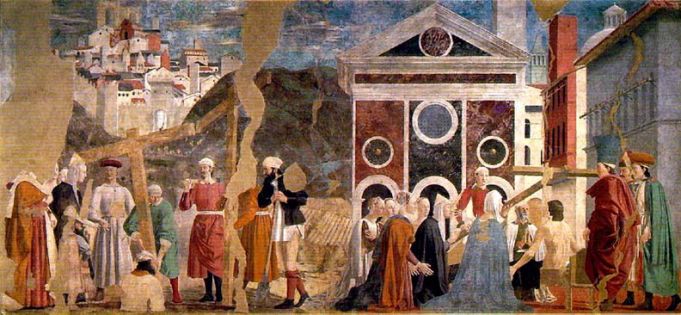
Arezzo is best known for its unique mediaeval architecture and its Piero della Francesca murals, housed in the Bacci chapel of the Basilica of S. Francesco.
The artist spent over ten years painting the celebrated fresco cycle known as the Legend of the True Cross, regarded as one of the jewels of Italian art, which was restored in 1992. These beautiful panels centre on the legend of Empress Helena recovering Christ’s true cross during a pilgrimage to the Holy Land. One panel shows Judas being tortured into revealing the whereabouts of the cross, whose discovery leads to miracles and battles before being returned to Jerusalem by Emperor Heraclius.
The frescoes feature in Anthony Minghella’s classic 1996 film The English Patient when Hana, played by Juliette Binoche, is hoisted around the chapel in a harness, viewing the ancient images by flare-light.
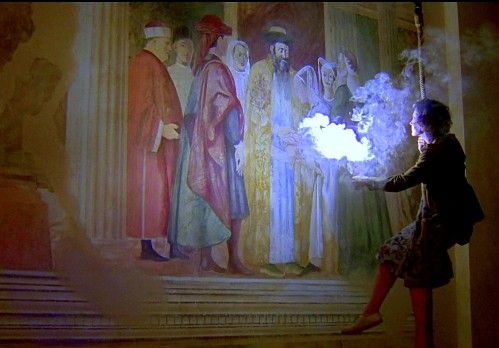
La vita è Bella
A year later, Tuscan actor and comedian Roberto Benigni immortalised Arezzo on the silver screen with his Oscar-winning Life is Beautiful. The city centre will be instantly recognisable to anyone who has seen the heart-warming film in which an Italian Jew who – together with his four-year-old son – is separated from his “principessa” wife and sent to a concentration camp during world war two.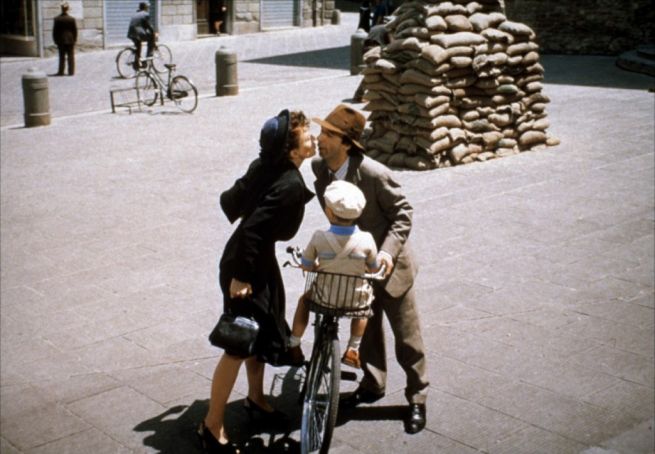
Piazza Grande
Central to its bizarre mix of buildings is the multi-arched S. Maria della Pieve, a romanesque church with a massive square bell tower, which draws visitors into Piazza Grande. This wildly-sloping meeting place is 10 m higher on one side than the other and is flanked by the 16th-century Vasari Loggia designed by Renaissance man Giorgio Vasari. Along with scholar and poet Petrarch, known as the Father of Humanism, Vasari is one of the city’s most famous sons.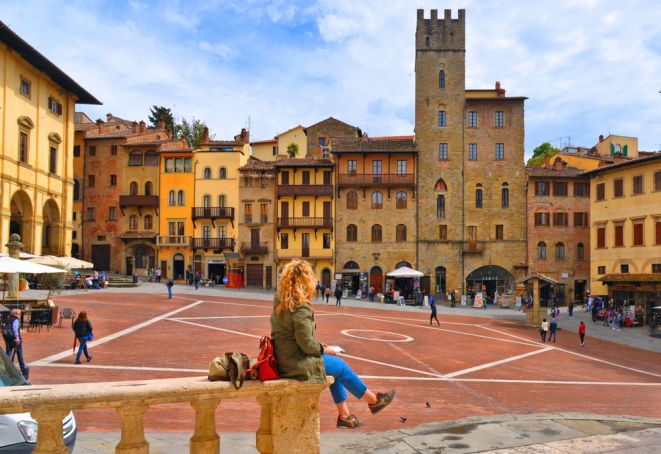
Other landmarks
Other landmarks to look out for are the imposing hilltop Gothic cathedral, and the Palazzo Pretorio whose façade is decorated with a plethora of stone-carved crests belonging to the city administrators from the 14th-18th centuries. One of the city’s most curious sights can be found underneath the Porta S. Laurentino in the fortified town walls. Here stands a bronze replica of the monstrous mythical beast known as the “Chimera of Arezzo”, near where the fifth-century BC original was unearthed in 1553.Immediately claimed for the private collection of Cosimo de’ Medici, the Chimera was part of a large treasure trove of Etruscan gems buried during Antiquity. Since its rediscovery, the part-lion, part-goat, part-serpent is recognised as the symbol of the Etruscan civilisation, and the original can be seen at the Archaeological Museum in Florence.
On the first Sunday of the month for the last 40 years, Piazza Grande and its environs has been filled with an enormous antique fair. The openair markets of the Fiera Antiquaria include all kinds of unusual collectibles and memorabilia, from furniture to jewellery, and attract up to 20,000 people a time. Indeed there are plenty of year-round antique shops in Arezzo, where authentic antiques far outnumber any mass-produced souvenirs.
La Giostra del Saracino
Every summer, Piazza Grande hosts the Giostra del Saracino, a reenactment of a mediaeval jousting tournament, celebrated for its pageantry and flag throwing. Held on the third Sunday of June and the first Sunday of September, the dramatic spectacle sees the city’s four districts dress in their colours while, armed with lances, riders strike Saracen effigies in front of cheering crowds. Ph: maudanros / Shutterstock.com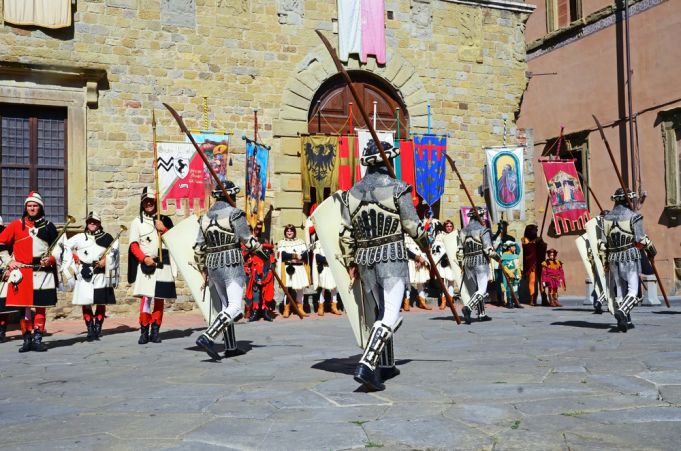
Where to eat
After working up an appetite from a day’s sightseeing, the 14th-century walls of La Buca di S. Francesco provide a welcome refuge. This restaurant serves scrumptious medium-sized courses of Tuscan specialities, desserts and locally-produced cheeses and wine. Its mediaeval-style murals and low, vaulted ceiling provide the feeling of stepping back in time, enhanced all the more by the flag-stoned floor which was once an Etruscan road. The surreal atmosphere is polished off magnificently by the convivial host – an elderly gentleman noted for his flamboyant bow ties – who adds a further splash of colour to an eccentric city.Useful information
Bacci Chapel, Piazza S. Francesco 4, tel. 0575352727, www.apt.arezzo.it. Mon - Fri, 09.00-18.30, Sat 09.00-17.30, Sun 13.00-17.30. Tour groups of up to 25 people depart every half an hour and advance booking may be required.Vasari Museum, Via Venti Settembre 55, tel. 0575409040. 09.00-19.00, Tues closed.
Fiera Antiquaria is held on the first Sunday of every month, and the preceding Saturday.
La Buca di S. Francesco, Via S. Francesco 1, www.bucadisanfrancesco.it. Mon evening, Tues closed.
This article was published in the 8 May 2013 edition of Wanted in Rome.
By Andy Devane
General Info
View on Map
Visiting Arezzo, where life is beautiful
52100 Arezzo, Province of Arezzo, Italy



